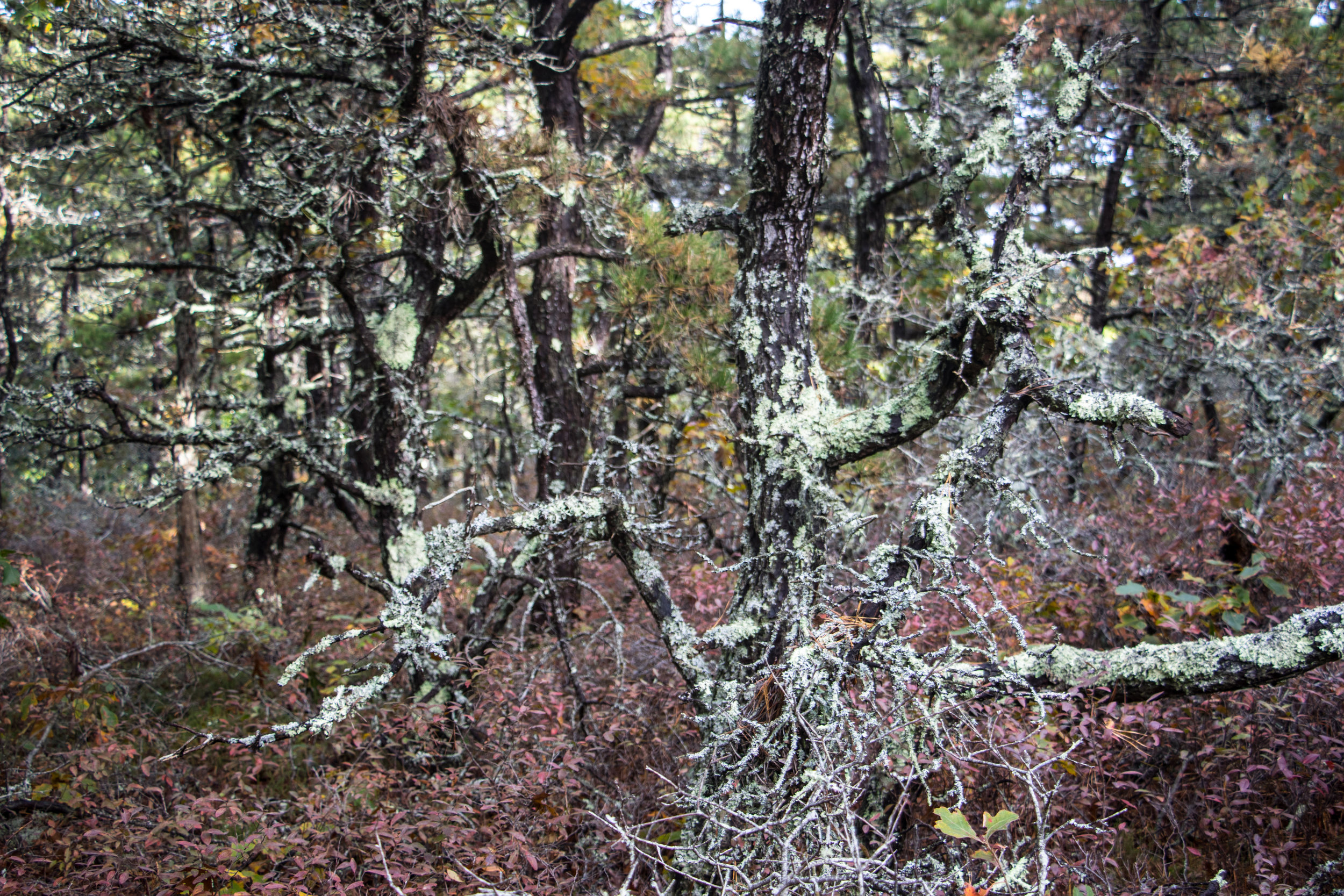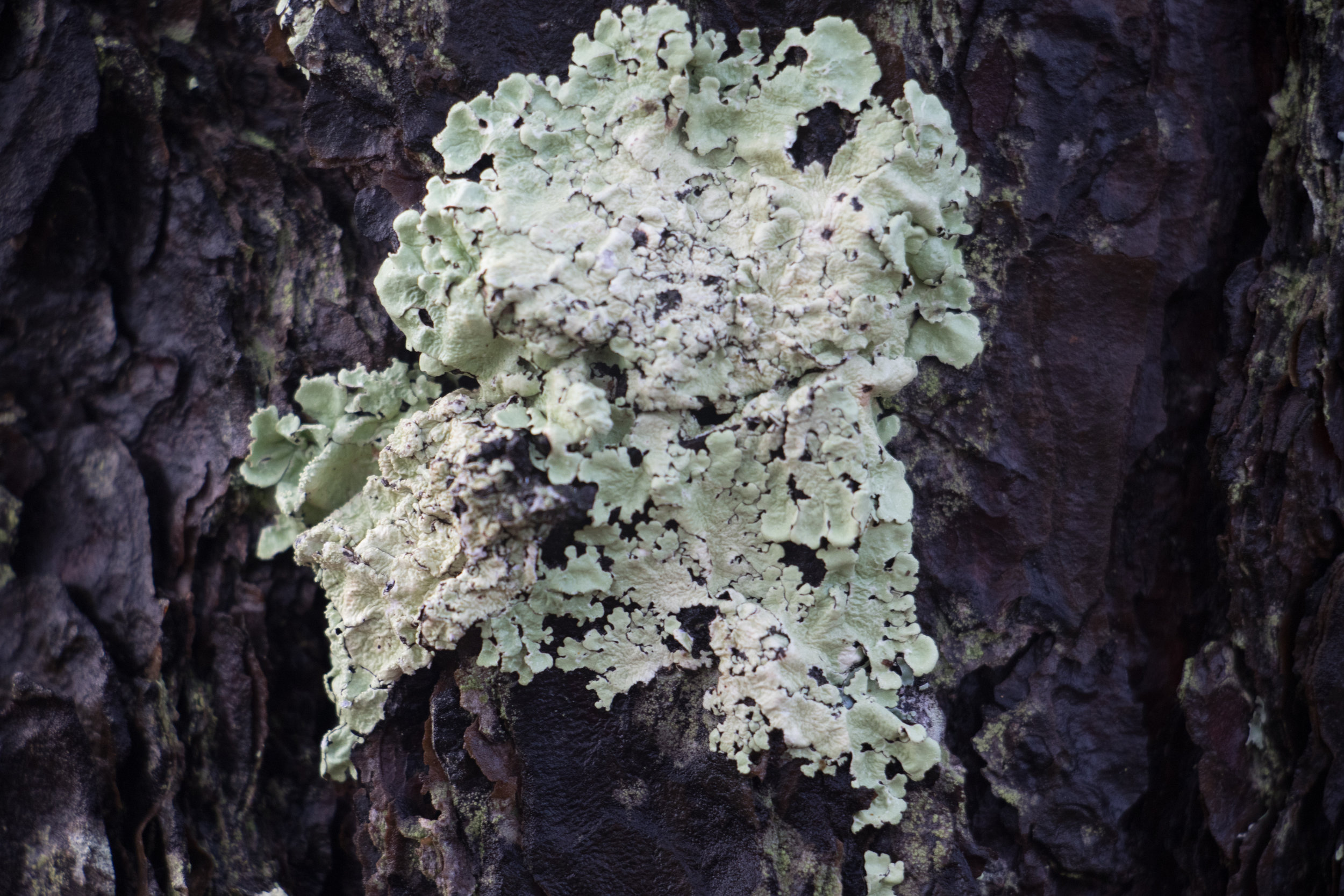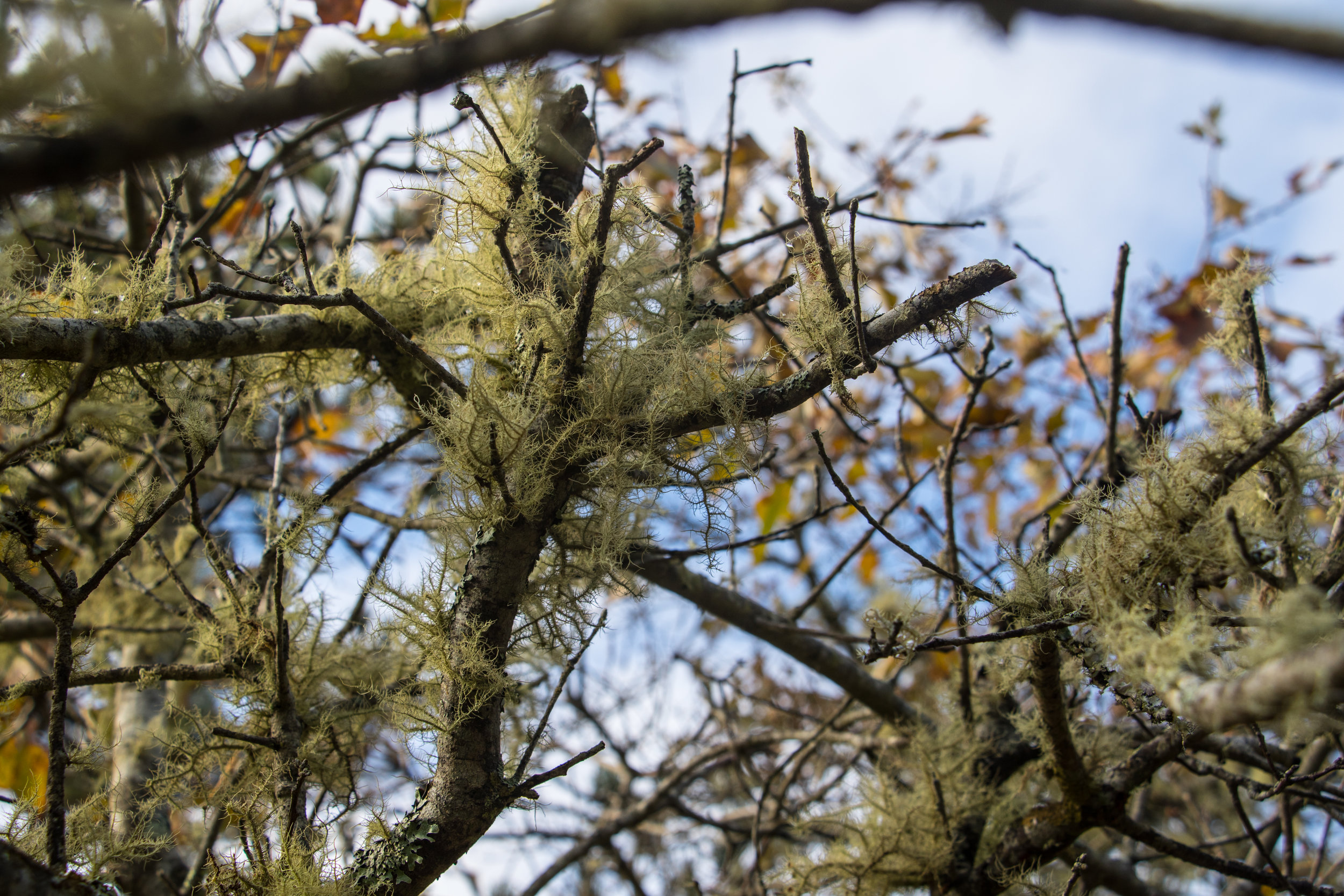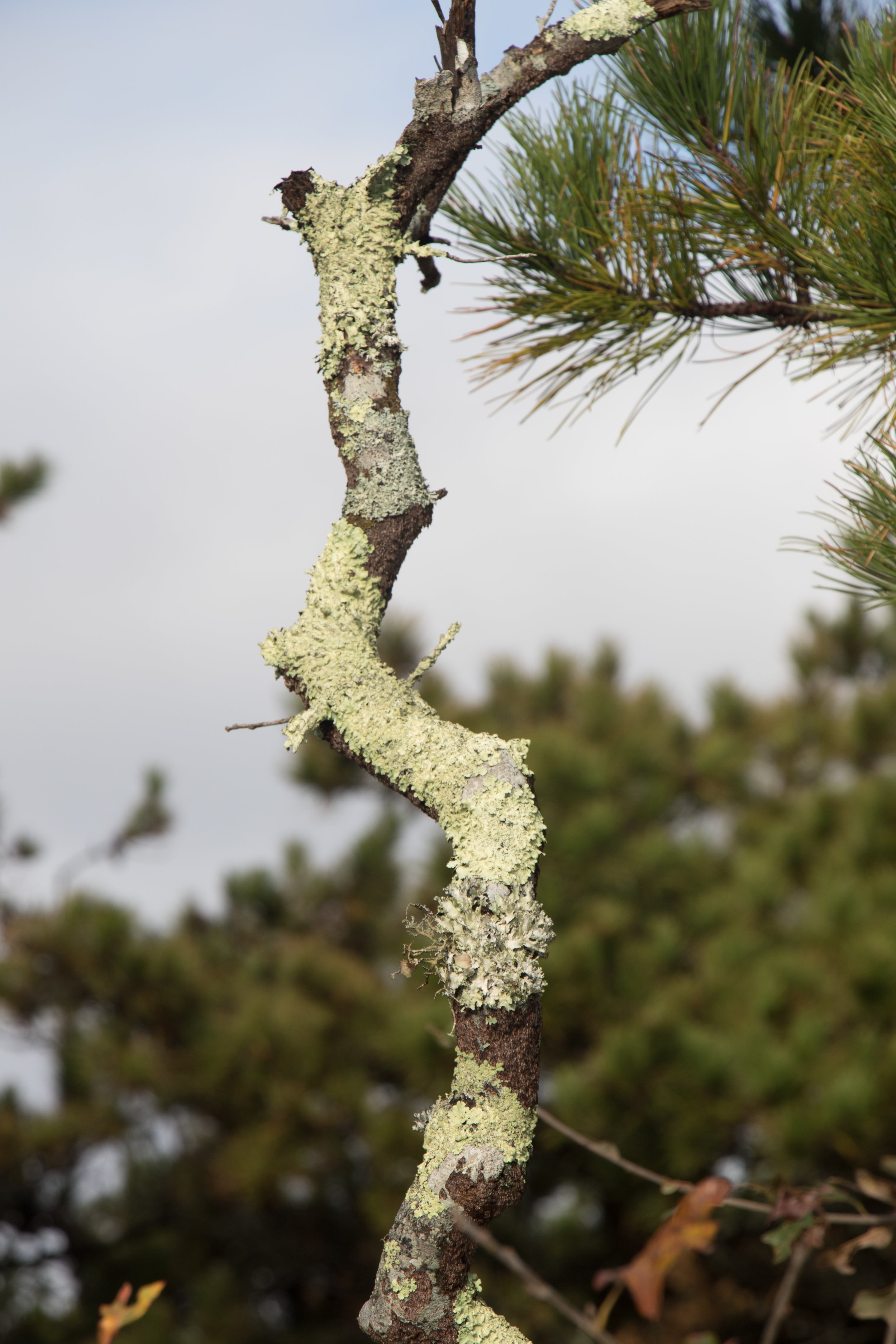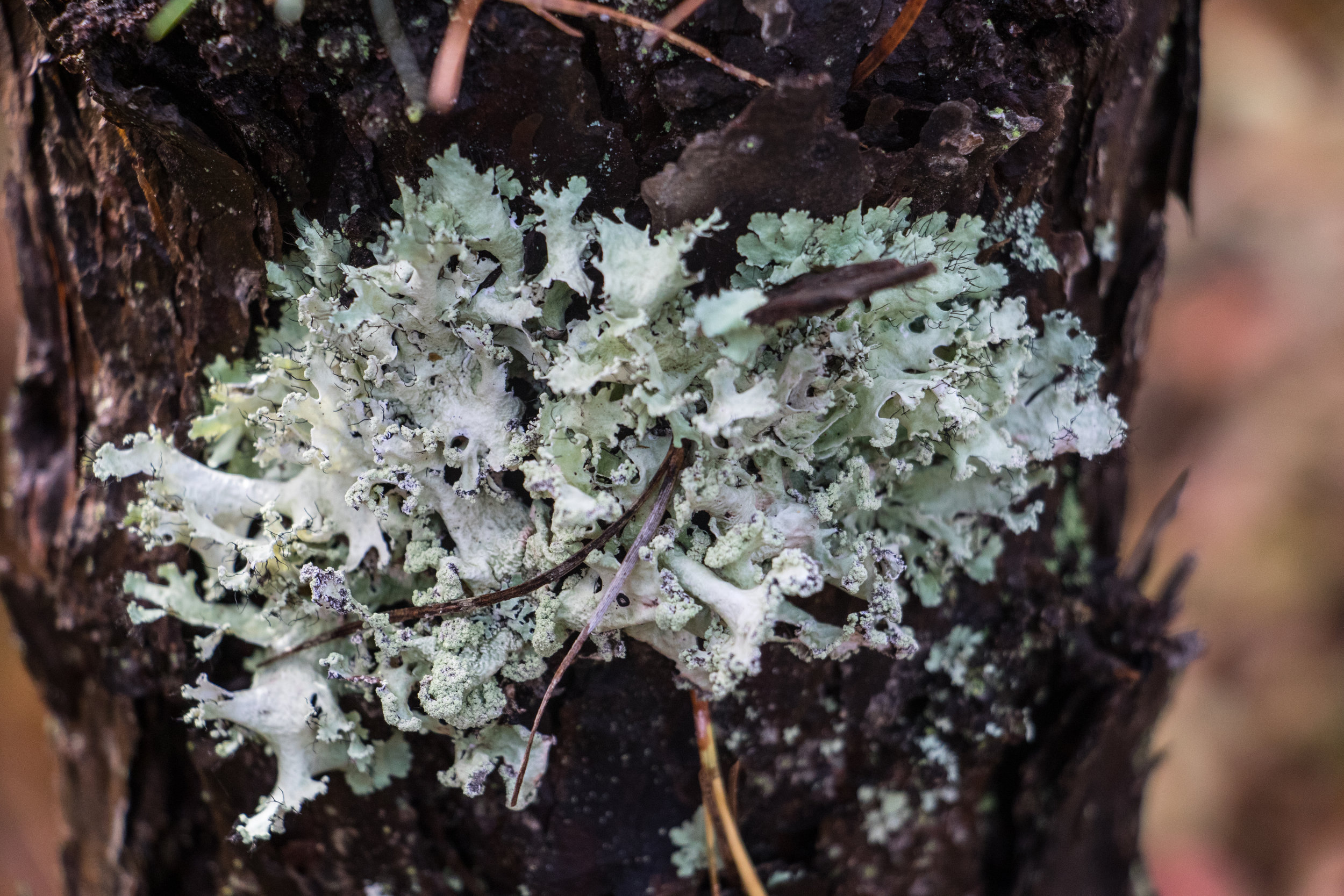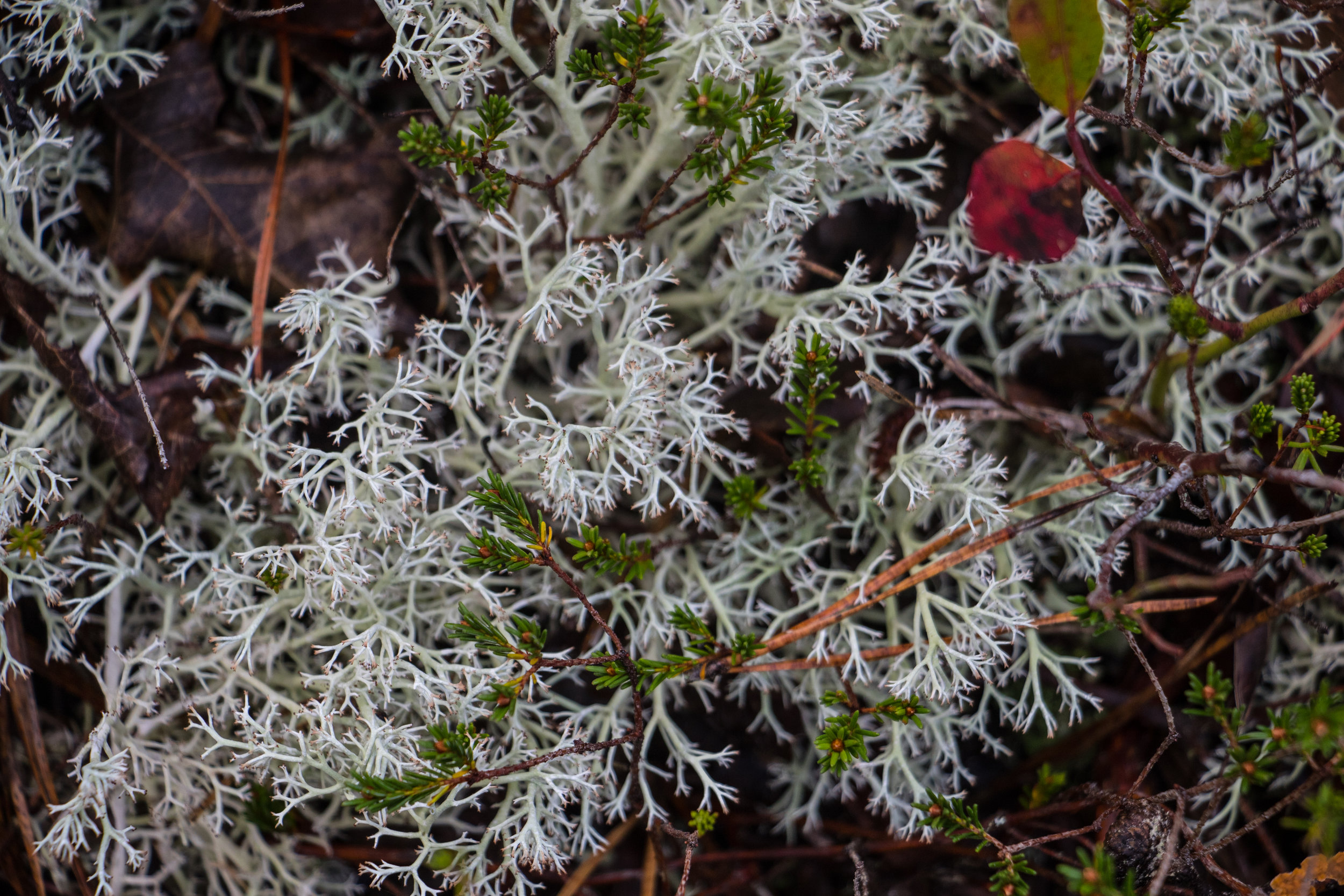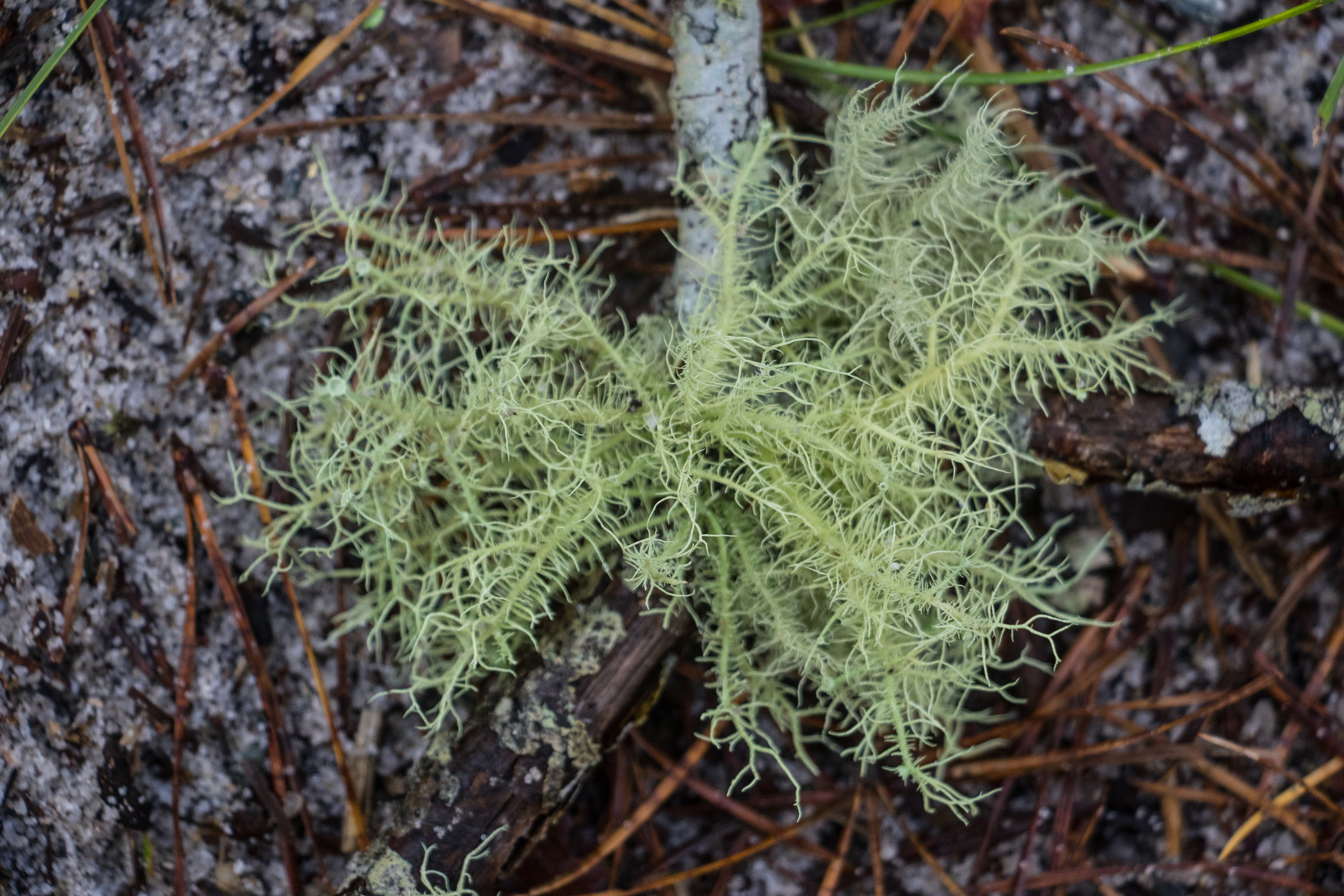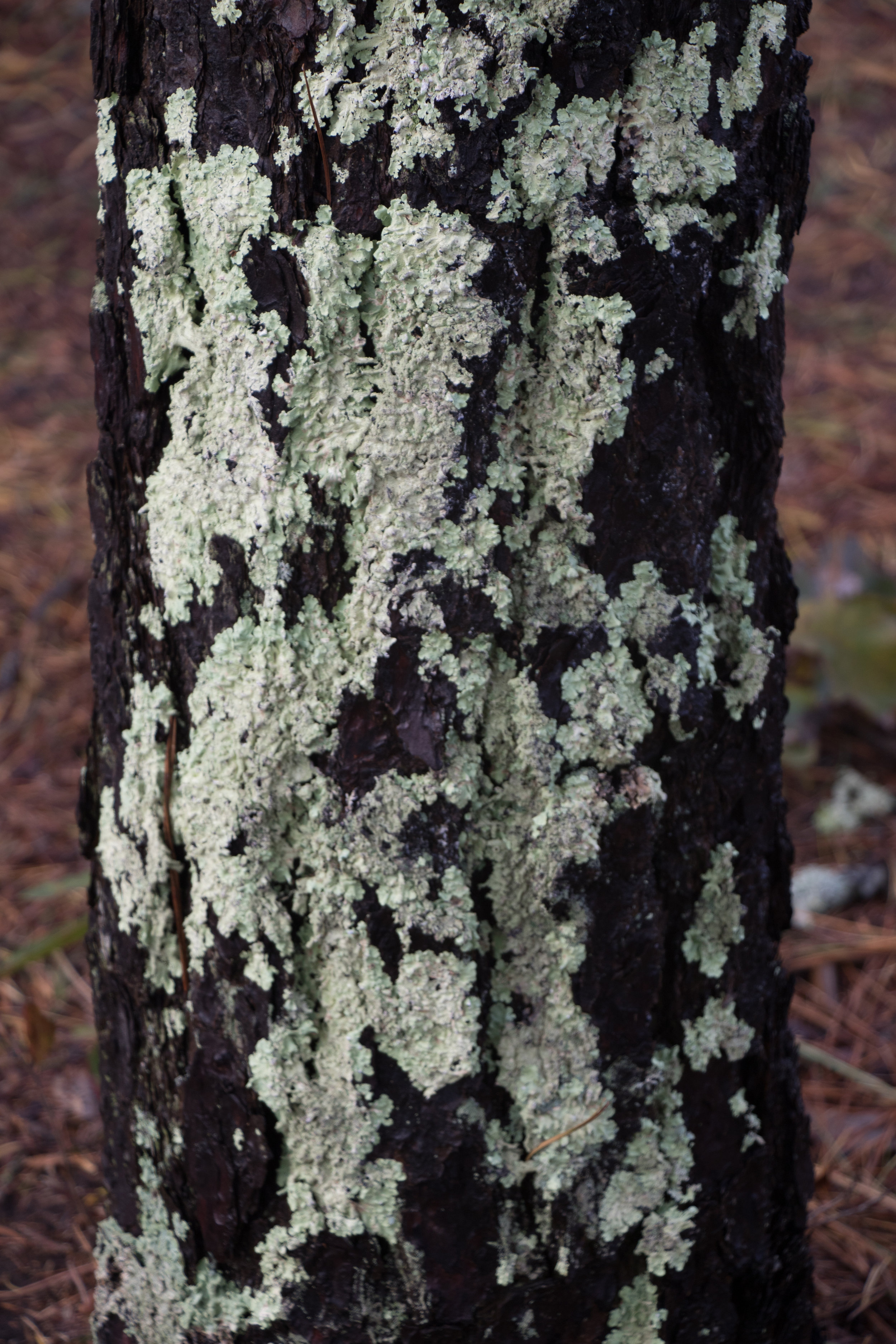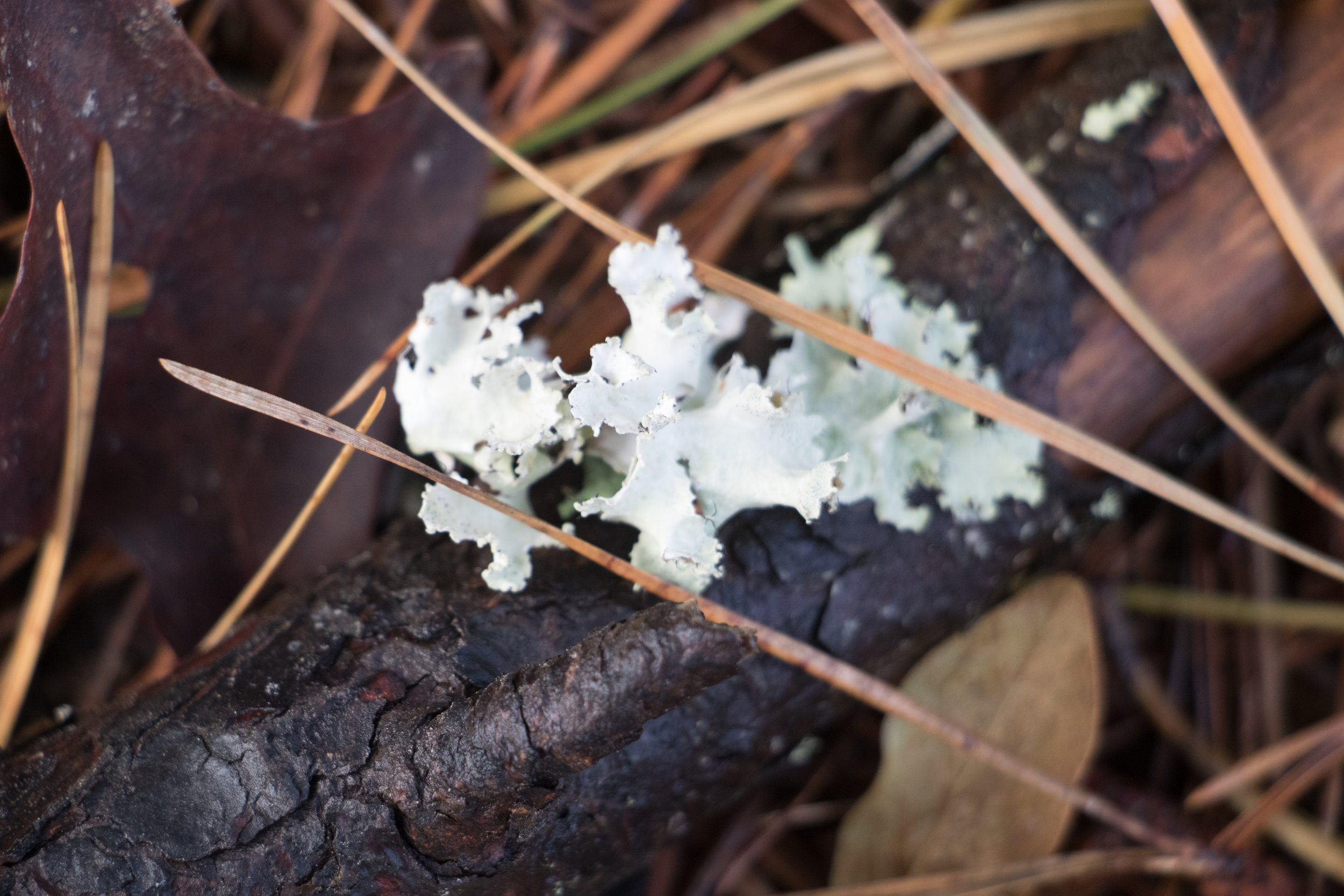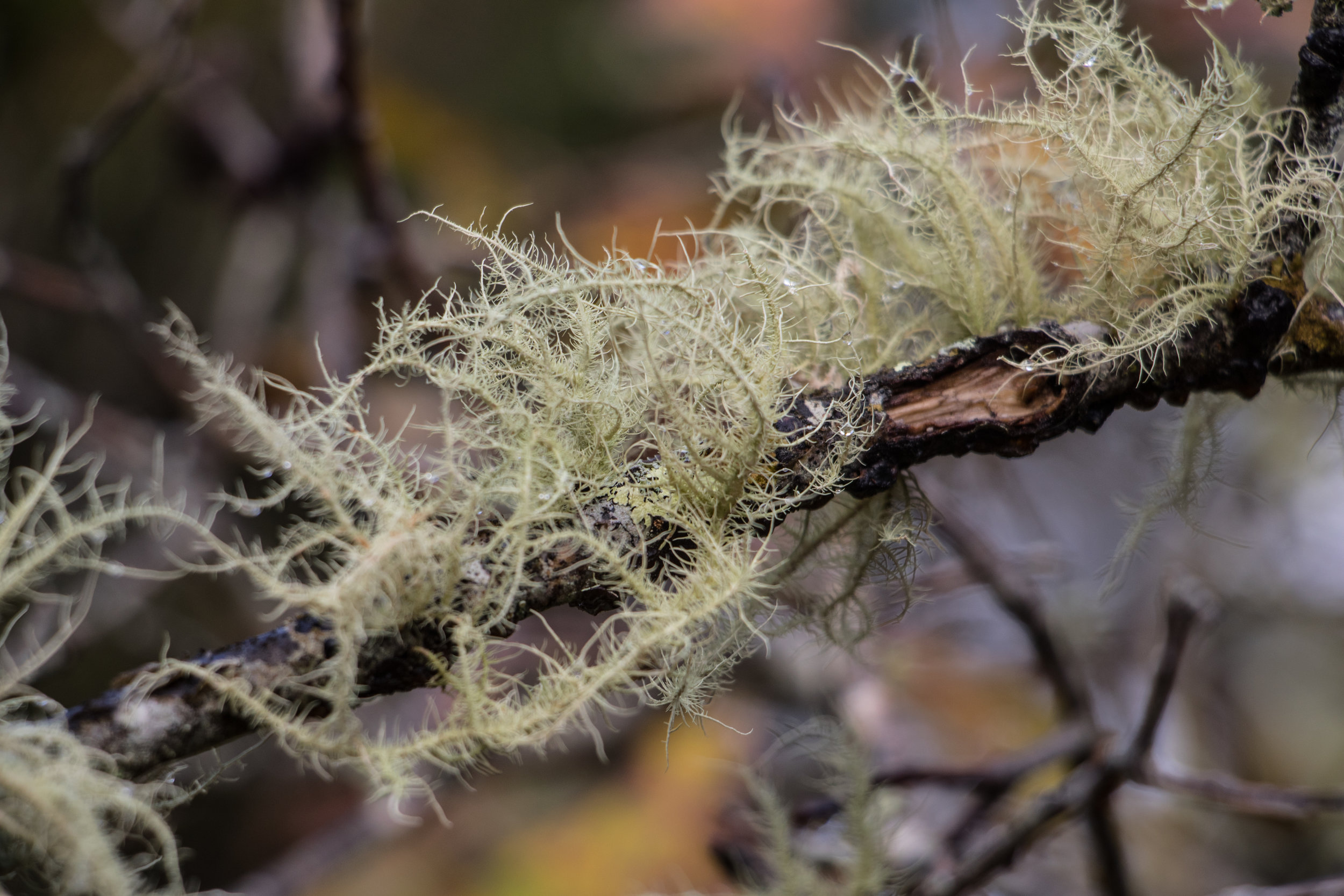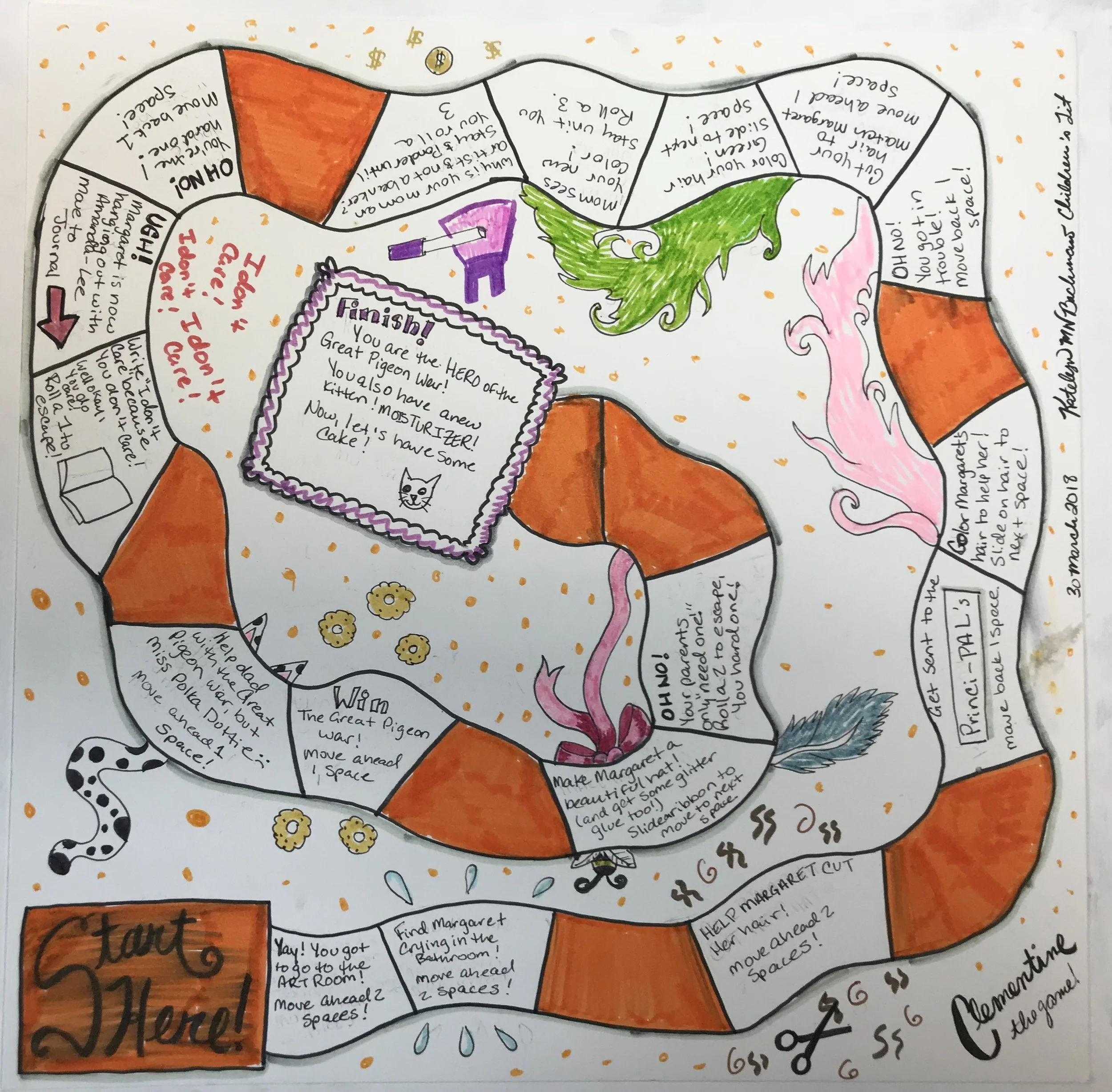I'm Likin' Lichens!
In today’s episode of “What’s the Point Of…” I have a question:
Did someone paint polka dots on all of the trees in the forest? What are these big patches of green?
They’re lichens! And they’re good for the forest! And for people!
Cape Cod Lichen Study, Photo credit: Liz Summit, 2018
On a recent visit to Cape Cod, I noticed many splotchy trees. They had big patches of green. I knew that was lichen (pronounced like-en). It’s something you may have noticed before too, when wandering through the forest. But, as I walked past green, green, green, and more green on tree trunks all around me, I started to wonder: was I in a Dr. Seuss version of the forest with spots, spots, and more spots? And, was all of this green healthy for the trees? What’s the point of a lichen?
What’s a lichen?
A lichen is a weird hybrid. A hybrid is something made of two different things, resulting in something new! An imaginary fox-bear would be an entirely new creature that is 1/2 fox and 1/2 bear!
Lichens are part fungus and part algae or cyanobacterium (some lichens have an algae inside. Others have a cyanobacterium). Similar to the structure of corals, the fungus and the algae or cyanobacterium work together. The fungus is the outer “shell” that protects the algae or cyanobacterium inside. The algae or cyanobacterium make food for the lichen through photosynthesis. This is an example of symbiotic relationships, like a clownfish and an anemone: the two organisms work together in a good way. In a lichen, the fungus and the algae or cyanobacterium work together.
Wow! There are a lot of kinds of lichen!
Yup! There are more than 13,000 species (kinds) of lichen. Lichen grow on something: bark, soil, and rocks. This base is called a substrate: what the lichen attaches to. The pictures above show several different kinds of lichen, all found within feet of one another on tree after tree in the swamp. While you need to study the DNA of a lichen to properly identify it, lichens fall into 3 general categories:
crust-like
leaf-like
beard-like
Those 3 categories have scientific names. crustose (crust), foliose (leaf), and fruticose (beard).
While, I’m certainly no expert, I think you can see those three kinds below. Crust-like lichens are flat and crusty. Leaf-like lichens aren’t flat. They attach to the tree (or other surface) with a root or stalk. They have a distinct upper body that might resemble leaves. Beard-like lichens are grow in strands or stalks. The wispy lichen on the left is called old-man’s beard. Can you see why?
So, do lichens hurt the trees?
Here’s the good news! Not only are lichens pretty, plentiful in areas like Cape Cod, they are also good for us. Remember that algae? Well, one of the things algae does is convert carbon dioxide to oxygen. But, algae is very sensitive and can be fragile. The fungus (the second part of the lichen) protects the algae and allows it to live in areas that might be too harsh for it otherwise. The benefit? More oxygen!
The presence of lichens often indicates really healthy air quality. That’s a chicken and egg scenario. Is the air healthier because of all of the lichens producing oxygen? Or, does the healthy air create a climate where algae can do its best work? Scientists are studying questions like these, and many more. We’re just beginning to discover all that lichens do for our world.
What are lichens good for?
Here’s a quick list of some of the other uses for lichen:
Food! In this area of the United States, deer like to eat lichen. In other places, caribou and mountain goats also eat lichen (I have never seen a mountain goat in the Northeast USA!).
In Japan, Umbilicaria esculenta are a delicacy (however, let’s not go into the forest and start licking lichens, okay? Remember, there are 13,000 varieties! Do you really think you could identify Umbilicaria esculenta just from this blog post?) In India, Kal Paasi is used as a spice.
Nesting Material: Birds use lichens to build nests.
Dyes: Some lichens are used to dye clothing different colors.
Medicine: some lichens are used in antibiotics!
So, join me in liking lichens! And, next time you’re out on a hike, see if you can identify one of the 3 types of lichens we talked about here!


